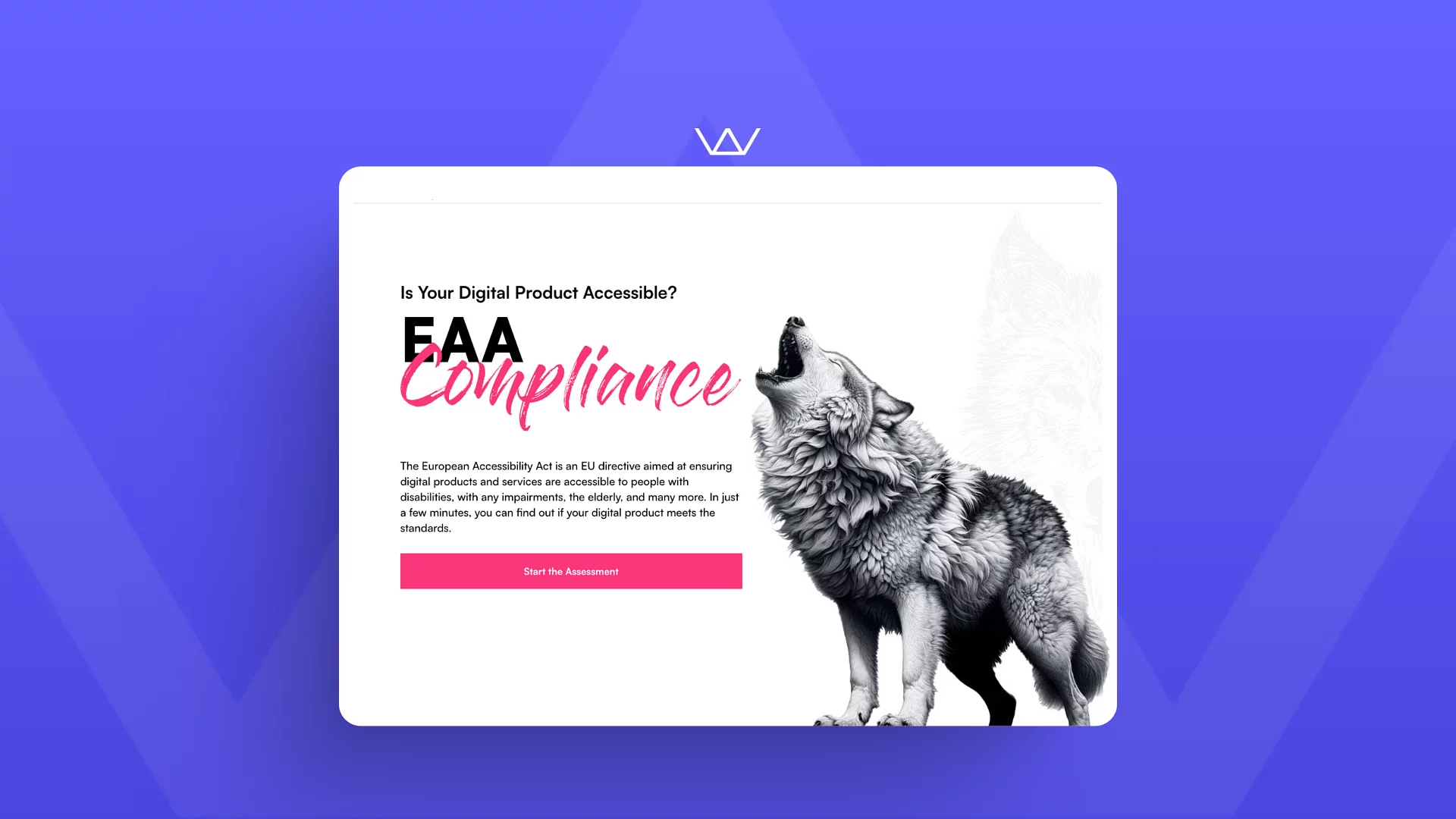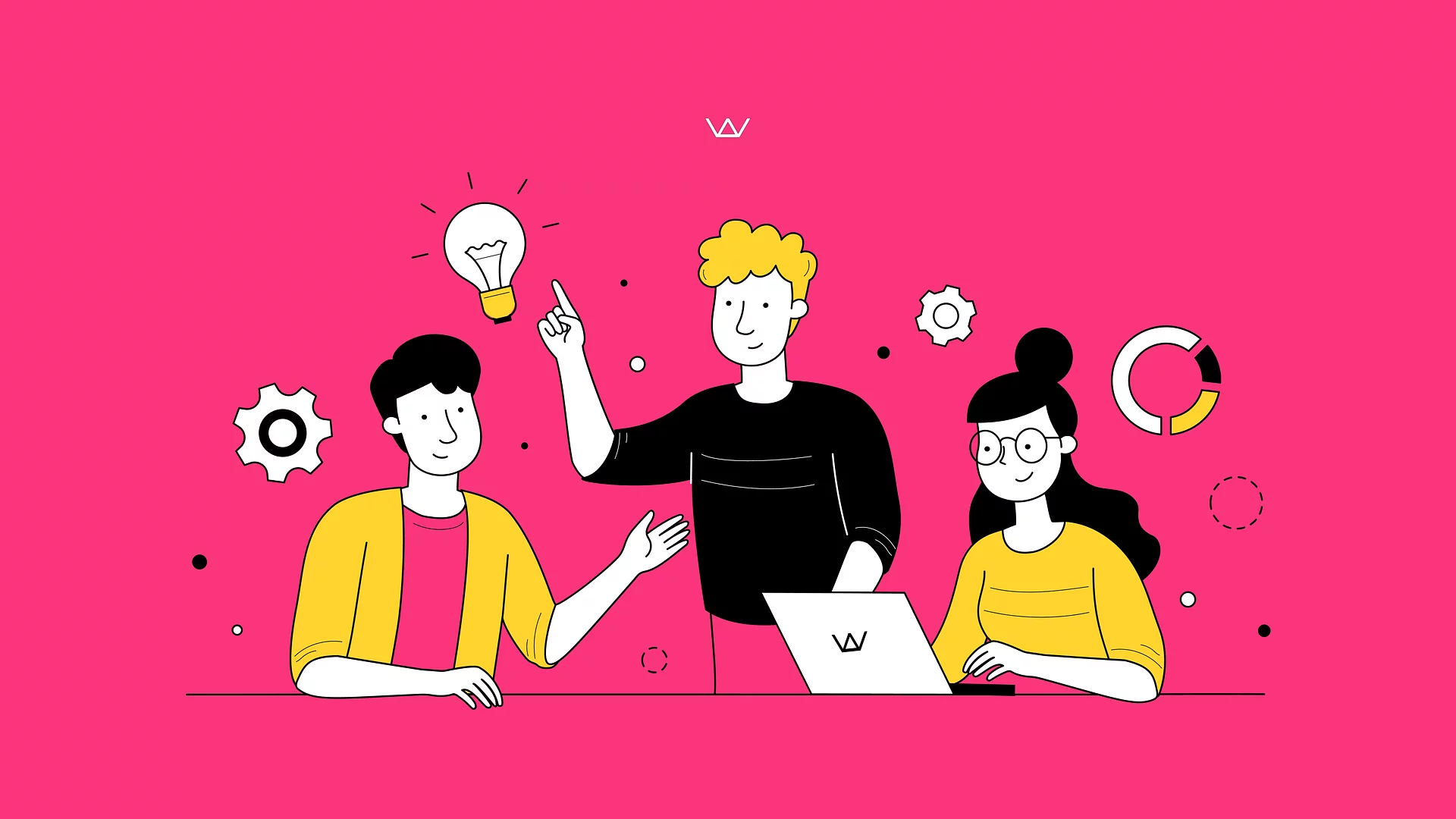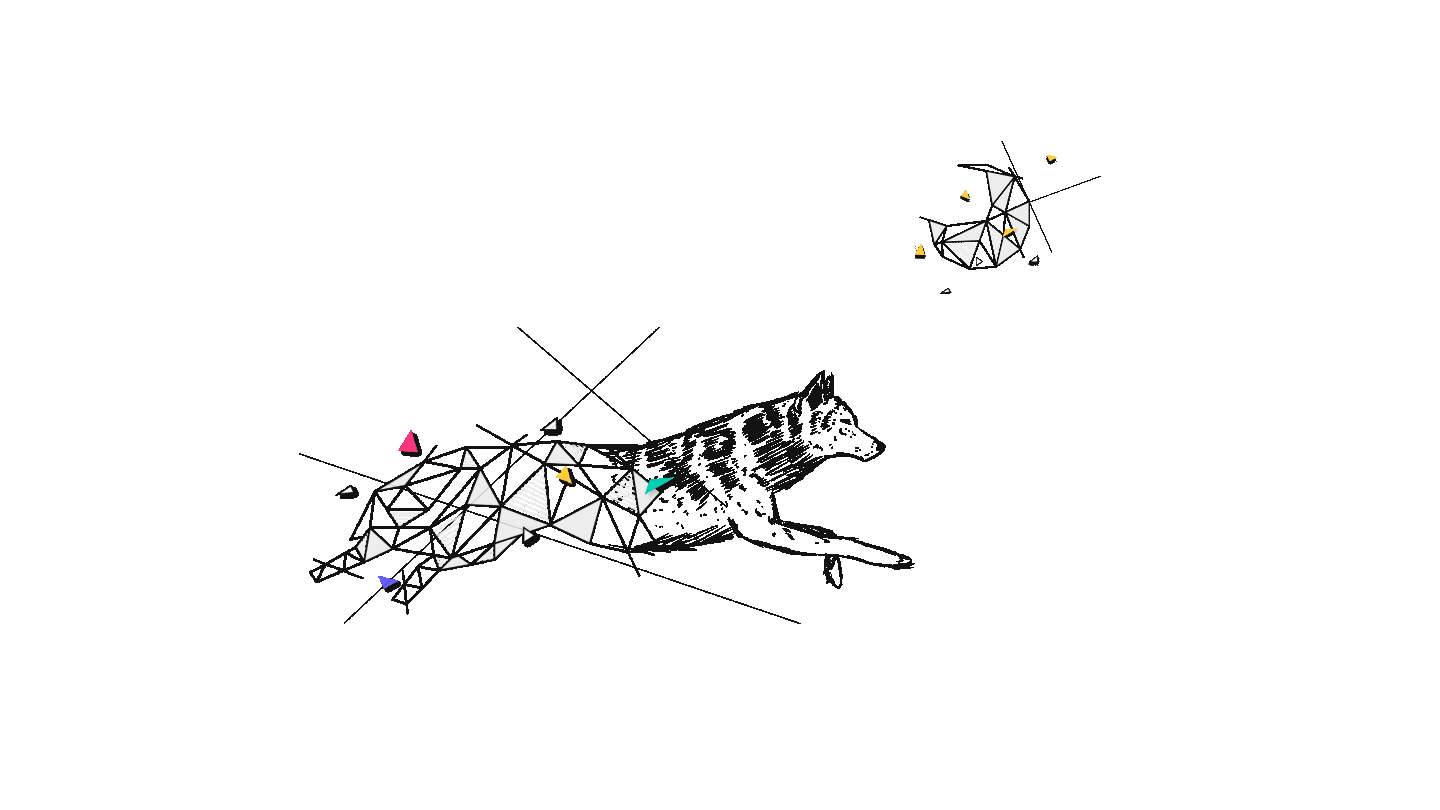
The high-tech beauty industry trends | A look in the mirror
Corina
Chief Marketing Officer
9 min
Nov 23, 2021
The health and beauty industry is a booming market, and it's not slowing down anytime soon. According to the latest beauty industry statistics, the global beauty market is projected to reach $758 billion by 2025, up from $532 billion in 2017. The cosmetics industry alone is worth $500 billion, with skincare and hair care products and even hair removal following closely behind. The beauty and cosmetics industry employs millions of people worldwide and touches the lives of billions.
Technology has been driving innovation in the beauty industry for years, and the trend will continue to rise. The development of beauty apps and the use of AI and AR technologies are making it easier for consumers to access information, try new products, and customize their beauty routines. Here, we'll take a closer look at some of the high-tech beauty industry trends to watch for.
High-Tech Top Beauty Trends Around The World
Beauty branding trends and cosmetic trends will actually be consciousness-driven by the consumers' preferences rather than the old fast-fashion lane of the beauty industry and a supplier trend-setting approach.
Overall, the beauty industry will grow (as it usually does), but this time will continue to rise, accompanying the health vertical and wellness industry.
Transparency and Diversity
Augmented Reality
Artificial Intelligence, Machine Learning, and IoT
AR and filters
Beauty Brands and Sustainability ♻️
Consumers are more conscious than ever; furthermore, meaningful sustainability messages and positioning from beauty companies are on the rise!
The global cosmetics market, the beauty products market, and the global beauty industry are constantly evolving, with new products and trends emerging every year. We can expect to see more emphasis on sustainable and eco-friendly products. With the growing concern for the environment, consumers are looking for cosmetics and beauty products that are cruelty-free, vegan, biodegradable, refillable, plastic-free, water-free, perfume-free, even plastic-free, and packaged in sustainable materials.
Beauty companies spent time struggling to find ways to minimize their carbon footprint and its impact in terms of climate change.
Fortunately, the tech industry and personal care industry are great ways of helping beauty brands to be more eco-friendly through 👇
-
Personalization services: Building algorithms that can help brands identify consumers' specific needs and behaviour leads to identifying personalized routines and products.
Hence, the consumers will be satisfied with their purchase and minimize the number of product returns. -
Reduction of overconsumption: People tend to buy multiple products in order to find that one product they actually need or fits their needs.
In addition to smart personalization, excellent UX/UI and clever copywriting can help consumers quickly identify their needed product without going through hundreds of options with a cumbersome user flow and hard-to-understand copy, ingredients, and/or impossible-to-find reviews. -
Reduction of sample packaging: There are zillions of samples out there for all cosmetic products.
The tech industry can help online beauty brands reduce this number through AI algorithms that will analyze the data of all purchases and cosmetics consumers' needs and provide a curated list of products that should be packed as samples. Furthermore, Augmented Reality (AR) technology can help consumers and brands through virtual try-on experiences.
There is a long way for the world towards a 100% green and sustainable approach, but available technology can definitely help the hair and beauty industry become eco-friendly, avoid greenwashing and make a real (positive) impact on the environment and for the skin care market to use more natural ingredients.
Transparency and Diversity in Cosmetic Brands and Beauty Companies ✌️
Consumers are way more aware, educated, and concerned, doing their (as in our) part in preserving our planet.
The next years will see a rise in everything that leads to transparent packaging, ingredients' trustworthy sourcing, clean beauty, and partnerships with small businesses and minority business owners.
This might seem like a human factor mainly, but when it comes to technology and how it can help to ensure transparency and diversity in the beauty industry, there are still a few options to look at, such as:
-
marketplaces to identify niche chemists and small businesses to ethically source ingredients;
-
apps to scan the ingredients and provide details about them;
Augmented Reality (AR) and social media filters 📲
It is no surprise that AR is still hitting the charts in trends across all industries, but the beauty industry has a lot of space for it as well.
The pandemic made it hard for people to go into the shop and test different products, and most of us worked online, and we wanted to look great on camera all the time.
So here are just a few ways to use AR in the beauty industry:
-
AR Filters for skin brightening, creating a glow effect, make-up, and hair. Everyone wants to look good on their Instagram feed!
-
One of the most prominent applications of AR in recent years has been the use of social media filters for beauty products. With the rise of social media and the increasing use of filters to enhance images, beauty brands have started utilizing AR to provide virtual try-on experiences for their customers.
-
AR filters for beauty tech products allow customers to try out different makeup looks and hairstyles virtually without the need to physically apply the products. This has made the process of purchasing beauty products easier and more enjoyable for customers, as they can now experiment with different looks and styles in real time, all through their mobile devices.
-
There are numerous examples of health and beauty sector utilizing AR filters on social media platforms. One popular example from the beauty sector is the company Sephora, which offers a wide range of AR filters on Snapchat and Instagram. These filters allow users to try out different makeup looks and shades that look like a makeover done by a makeup artist from the comfort of their own homes.
-
Virtual Try-on
-
There are multiple reasons we all love virtual try-on options - commodity, lack of ability to go in the department stores rather than in-store, sustainability, curiosity, etc. And the beauty industry has finally decided to focus more on personalized experiences and quality over quantity.
-
Virtual try-on technology using virtual reality has seen plenty of interest over time, and it hit the charts in 2020 in terms of Google searches.

Multiple brands started to introduce try-on options on their website to make it easier for the consumer to identify the shades they need for their products (makeup, lipsticks, foundation, etc.). This amazing tech solution was only adopted by very well-established beauty retailers, but it will become way more affordable and easy to implement (ARKit from the latest iOS release is actually an amazingly well-rounded solution to start with), and we are sure it will be adopted by many brands across the world.
In addition, while virtual try-on has already been adopted by the eyewear industry, we think it will also be adopted by the jewellery businesses and hair dye companies.
The beauty of Artificial Intelligence (AI), Machine Learning (ML), and Internet of Things (IoT) 🤖
Artificial Intelligence (AI), Machine Learning (ML), and IoT are used and abused across all trending articles, but the beauty industry is still behind when it comes to adopting them.
AI in the beauty industry
-
Personalization
Using the right algorithms within a beauty app will ensure a more functional approach towards product purchases. By knowing a consumer's exact needs based on their skin type, preferences, and goals, AI and ML can help brands provide personalized routines and products to each consumer.
AI can call on a huge range of methods to provide suggestions and personalize the users' experience. The technology can connect multiple metrics, products, and ingredients to support both product lines and the customer's skin care needs. -
In-depth analysis using AI and IoT
Devices connected to your phone or just standalone tools using AI can do wonders when it comes to in-depth analysis and, of course, better personalization.
Beauty brands can now easily build different smart beauty devices:
-
skin scanners and skin apps for skin analysis to help consumers get instant At-Home Skin Assessments that can check skin health, skin hydration, etc. A good example here would be the set of solutions from Fitskin™ or one of the solutions we’ve mentioned in our article on What SPF is and how to use it together with technology to better protect yourself, on which we wrote more about how technology and sun protection go hand in hand.
-
hair scanners - Similar to skincare, hair care is another huge topic, and there are scanners out there to help consumers scan their hair and scalp to identify any damages and diagnose and treat hair conditions.
-
shade match scanners - Beauty apps can have multiple purposes in terms of scanning; some can be for diagnosing conditions or types of skin/hair, but others can be to make your choices easier and faster.
A shade match scanner will scan your colour type and pigmentation and help you identify the right shade for your foundation or other makeup products. -
Packaging scanners to check the ingredients - As mentioned at the beginning of the article, sustainability and transparency are top priorities for consumers.
Our guesstimation is that people will not only research every single product to double-check the ingredients and how healthy they are, but they’ll also try to identify ways to demystify the chemist and cosmetic copy into human-friendly content. -
Makeup Printers - The IoT world never ceases to surprise us. The printing industry penetrated the beauty one, and there is a high demand in terms of printed makeup now.
Basically, a makeup printer scans the consumers' skin, checks for any depigmentation, and then deposits the perfect amount of serum one may need to conceal any sunspots, post-inflammatory hyperpigmentation, or even age spots. The serum that is deposited through the makeup printer uses a mixture of red and yellow pigments and a shade that is as close as possible to your natural skin tone to make the serum print the perfect matching makeup. -
Smart hairbrushes - We all comb our hair, but smart brushes are on the rise as hairstylists' visits were kind of limited in the past two years, and people were focused a lot on their online appearance as well. Through the new hair salon industry trends and salon services, we can find smart brushes use sensors to identify split ends and damaged hair and even measure frizz and hair quality.
Based on the hair’s status, a smart brush is built to identify the right brushing patterns and strokes, using the vibration and movement that is best suited for your hair to avoid increasing damage. -
Multi-application devices - We've mentioned a multitude of technologies up until now: skin scanners, hair scanners, smart brushes, etc. And they are all amazing; the only downside of it is that they were built as single-application solutions.
Experts are now aiming for solutions that are as close as possible to all-in-one devices/apps. This is why the multi-application devices are peaking, and we think they will rise even more and more as dermatologists and physicians need to perform multiple treatments via one system.
Boosting purchasing decisions - When AR meets AI 🤝
A+ is the result of the beautiful love story between AR and AI in tech. Looking at the beauty industry trends, new trends in cosmetology, and how beauty apps are evolving, we can only see how A+ adoption is accelerated across different verticals:
-
E-makeup: Wear a beautiful look for your virtual-only interactions (e.g., Zoom meetings, social media live sessions, etc.)
-
Smart Sampling: Virtual try-on solutions and samples that are produced and delivered based on your audience's needs and personalized recommendations
-
Digital Diagnosis and e-expertise: Multiple marketplaces and apps host virtual events and provide complimentary consultations from beauty consultants, cosmetologists, and dermatologists. While the pandemic called this an innovation at first, we think this is a necessity for the future as well, and this type of service will only grow.
-
Diagnosis to Delivery: There are plenty of ways to personalize a service nowadays, and apps within the beauty category have now taken a step forward and added the option to deliver the recommended products to your doorstep with just a few taps.
E-commerce and customer experience💰
E-commerce is the future, and this is definitely not the news. But the digitally-enhanced stores and phy-digital spaces are!
Brands and beauty retailers are now experimenting with new technologies and ways to create stunning experiences, no matter if consumers shop behind a screen or when they physically walk into the store. This upgraded version of e-commerce is way more accessible, and we think it is here to stay and not just for the beauty industry.
Technologies to enhance e-commerce and customer experience:
-
Stores are now adding interactive displays, screens, and selfie studios.
-
Virtual try-on can be done from physical stations as well: consumers can easily walk into a station and pick an entire outfit to virtually try-on, or even complete makeup looks.
-
Smart touchscreens use infrared technology to help consumers match their skin tone with the right foundation.
-
Contactless shopping: Consumers can just scan their products using their mobile phone and checkout.
Subscription-based E-commerce for beauty products
There is high demand and strong growth in the clean hair and body care innovation, as well as in the categories covering sunscreen and serums. Mostly because skincare became a priority, while maskne became a challenge for most of us, and so did hyperpigmentation. This led to an increase in recurring purchases, and we definitely think that most skincare brands will work on:
-
Customized monthly subscription services for skincare or haircare routines thanks to the in-depth analysis done via scanners and the e-diagnosis
-
Men's skincare product development is also on the rise, and recurring plans to get their products covering shaving, skincare, or cologne are also a good way for companies to reach their consumers easily.
Social commerce, personal care on another level
The time we spend on social media is higher and higher, and this is where all brands can showcase their products best through their pages, social media marketing, user-generated content, and beauty influencers (influencer marketing).
If, up until now, everyone used social media to increase awareness, support engagement, and social interaction between a brand and their consumers, Instagram and other social media channels made it extremely easy for brands (no matter their size) to use e-commerce features. This keeps the users within the platform and allows them to buy and sell products and services with just a couple of taps in their feed and building brand loyalty.
Technology is also making it easier for consumers to access beauty products and discover new beauty brands. Online shopping and beauty subscription boxes are becoming more popular, with many consumers preferring the convenience of having products delivered to their door. This trend is particularly popular among Gen Z, and particularly younger generations, who are used to buying everything online.
How has the beauty industry changed? With the help of AI, AR, and beauty apps, consumers can now access a wider range of products and get personalized recommendations. As the global market and the cosmetics and beauty industry continue to grow, the current trends in the beauty industry will embrace more and more innovation and creativity.
Build Your Beauty App With Us 💄
The beauty of having us as a tech partner is that we know how this industry works, and our portfolio covers apps for diagnosis, treatment, and hyper-personalization across multiple beauty and health verticals — and we look forward to working on the next meaningful digital transformation!
About Wolfpack Digital 🐺
With over 140 projects successfully delivered to our partners, we are a web and mobile app development company. Our mission is to bring performance and beauty to the world through technology.
We develop projects start-to-end and have extensive expertise in beauty app design and development, fintech app development, healthcare IT solutions, custom website development, cross platform app development services, and many more.
Do you have a project in mind? Get in touch with us, and let's talk more!
pack knowledge

Is your digital product ready for the European Accessibility Act (EAA)? Take the assessment to find out!
Oana
Marketing Specialist
5 min
Mar 20, 2025
With the 2025 deadline approaching, ensuring your website or app meets accessibility standards is important. Our free EAA assessment helps you quickly check compliance and identify areas for improvement. At Wolfpack Digital, we specialize in making digital products accessible, user-friendly, and future-proof. Take the assessment today and ensure your platform is inclusive for all users!

How Much Does Web Development Cost? A Complete Guide
Oana
Marketing Specialist
10 min
Feb 26, 2025
Building a website is more than just designing pages—it’s about creating a functional, high-performing, and scalable digital presence that meets your business goals. Whether you're launching a simple business website, an e-commerce store, or a custom web platform, the cost and approach will vary based on complexity, functionality, and long-term needs.

UX/UI Design: Collaborating with a Software Development Agency When You're New to the Game
Cristian
Head of UX/UI Design
7 min
Feb 18, 2025
This guide will walk you through every stage of the UX/UI design process, from the initial conversation to launching a product you can be proud of. Understanding the design thinking process, which includes empathizing, defining, ideating, prototyping, and testing, is crucial for creating user-friendly products and solutions.


Brief us and let’s work together
